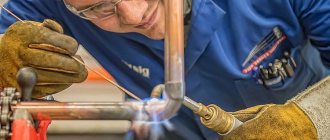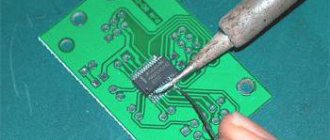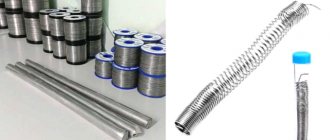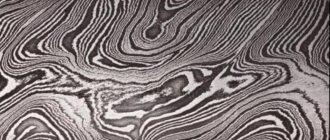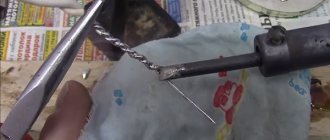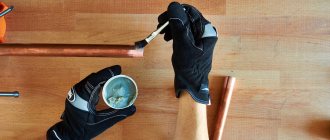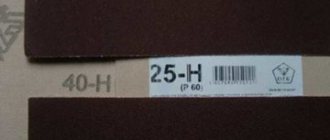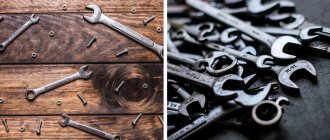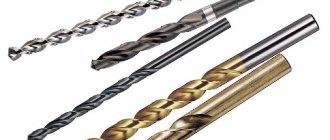Solders with flux are intended for structural and assembly soldering of various materials, assemblies and blocks of radio-electronic equipment (REA), as well as for tinning and soldering of leads of electrical and radio products (ERI), including integrated circuits, semiconductor devices, printed circuit board (PCB) elements and others REA products, including soldering of wires, cables, harnesses and repairs.
Manufactured in accordance with TU 3439-001-07518266-2017
Solder production areaSolder production line
Advantages
Noble metal in its pure form has high ductility and melting point.
It is impossible and impractical to use silver without additives as solder. It makes no sense to invest energy to achieve a molten state at 962 ℃ and get a soft seam as a result. It is profitable and convenient to use an alloy of silver with other metals. Copper is most often added. Many formulations contain zinc. In minute quantities, not exceeding a fraction of a percent, iron, lead, and bismuth are introduced into metal composites.
The melting point of silver solders decreases in proportion to the reduction in the mass fraction of the noble component. Consequently, energy and time costs for soldering are reduced.
Alloys from the group of silver solders coat work parts well, contributing to the formation of strong seams. The joints do not oxidize; withstand mechanical and vibration loads.
The silver-containing alloy can be used for soldering metal products of a wide variety of compositions. For every practical situation, you can find suitable grades of silver solders in the available range.
They have different ratios of components; different density and electrical resistivity indicators; may contain alloying additives that improve technical characteristics.
Fluxes.
Fluxes
designed to dissolve and remove oxides from the surface of soldered parts, serve to protect metal and solder surfaces from oxidation, and ensure good wetting of the surface of parts with liquid solder.
For example, sting
The soldering iron is made of copper, which oxidizes when heated, and a soot crust forms on the working surface of the tip. If you touch the solder with such a tip, it will naturally melt, but it will not remain on the working surface, but will simply roll off, so you will not be able to solder anything with such a soldering iron.
The most common and affordable flux is rosin
, which is made from pine resin. It looks like amber, transparent with a yellowish tint.
Silver percentage
The composition of all silver alloys used for soldering is regulated by GOST.
The markings always contain numbers next to the understandable abbreviation PSR. They indicate the percentage of silver.
In general, the following trend is observed: alloys with a high concentration of noble metal (50%, 72%) have low resistivity values. They are used to form compounds with high electrical conductivity.
Silver solders with a relatively low silver concentration (40-62%) are used for soldering parts that will not get very hot.
Characteristics of silver solders in tables:
Inexpensive metal alloys with a silver content of 10% to 45% are widely used in mechanical engineering. Metal composites with low silver concentrations produce a hard weld.
Almost all silver solders contain iron, lead, and bismuth in the alloy. The total amount of additives is just over 0.1%.
Many radio amateurs use tin-silver solder compositions containing only 2% expensive metal, 62% tin and 36% lead. The alloy easily passes from a liquid to a solid state and conducts electricity well.
In addition to domestic materials, suppliers offer a large number of imported silver solders. The price for them is naturally higher, but the quality is quite comparable to Russian products.
Physico-chemical properties and composition
The chemical composition of the soldering material is determined by GOST and affects its physical and chemical parameters. To change the properties, elements such as copper, zinc, tin, antimony and others are included in the composition.
Standard for dobvako content in various brands of solders.
To reduce the cost of the composition when soldering less critical compounds, silver is diluted with tin, lead, and zinc, which are cheap relative to silver.
Applications of low-cost brands
PSR-10 solder has the lowest silver content and the highest melting point of 830 ℃. In addition to 10% silver, the alloy contains 53% copper and about 37% lead.
The specified content of noble metal is the minimum possible in soldering agents. The resulting seam can withstand heating up to 800 ℃.
This silver material is intended for soldering steel alloys and compositions of non-ferrous metals. They can solder brass with a high concentration of copper (more than 58%).
It is important to remember that the operating temperature of the soldered parts should not be higher than the melting temperature of the given silver solder.
An alloy containing 12% silver is recommended for use with copper; brass with copper content reaching 58%.
Soldering with inexpensive silver solder PSR-25 allows you to obtain a particularly clean seam. The silver content of 25% does not result in very high strength characteristics of the joint. The solder also contains 40% copper and about 35% zinc.
For delicate work, the existing shock resistance indicators are sufficient. If you have to firmly solder large parts, you should choose a different composition.
What is solder?
Solder is a pure metal or thermoplastic alloy made from several components. Designed to connect copper parts into a common integrated network.
When exposed to high temperatures, the solder melts, spreads across the processing area and seals the surface. After final cooling, a strong, even seam without errors is formed on the pipe material
The technology of joining two fragments, carried out according to this principle, is called soldering.
Among the main advantages of the technique it is worth highlighting:
- connection without deformation;
- preservation of the original shape of the processed parts;
- absence of any internal tension;
- excellent strength and high level of tightness of the created seam;
- resistance of the bonded area to different temperature conditions, including intense heating;
- simple separation of seam sections in case of need to change the system format.
Soldering is carried out with special equipment - a soldering iron, a gas torch or a blowtorch. Immediately before work, the area is thoroughly cleaned of surface defects and technical oils, and only then work begins.
The process of connecting pipe fragments is easy and quick, but requires mandatory compliance with basic safety rules. To avoid problems and injuries, you should wear thick work gloves on your hands, cover your face and eyes with special goggles or a mask, and protect your clothes with a thick apron. This will protect the technician from potential accidents.
For soldering at home, a soldering iron is most often used. A torch or lamp is used where the power capabilities of a soldering iron are not enough or where it is necessary to connect parts of great thickness and impressive mass.
Average percentage of silver
Silver solder grade PSR 40 forms seams with good strength and ductility. It is recommended to use it for working with moving parts. After hardening, the connection can be deformed without compromising its integrity and strength.
The low melting point allows you to work at home. Copper-nickel, stainless, heat-resistant alloys, bronze, brass, and kovar are suitable for soldering with the specified silver solder.
The composition of PSR-45 allows you to firmly solder thick joints (up to 3 mm inclusive). The seams withstand shock, vibration, the influence of an oxidizing environment, and do not form cracks.
The result is largely due to the fact that the molten silver solder well envelops the working area. The alloy is used for soldering parts made of copper, nickel, steel, and bronze.
Tube arrangement
The use of materials with dual functions in the form of tubes is economically and technologically beneficial. Consumption is reduced by almost 40%, and there is no need to remove the remaining flux after soldering.
Tubular solder contains 1, 3 or 5 internal channels into which flux is placed. There are several advantages of using this type of consumables:
- simultaneous supply of two trains to the working area;
- improvement of the final result;
- increase in work speed;
- simplification of soldering in hard-to-reach areas;
- reducing losses of funds;
- possibility of strict dosing;
- eliminating the possibility of dirt getting into the flux.
Tubes with one internal cavity can make soldering a little more difficult due to the rapid flow of flux into the work area. When working with multichannel solders containing flux, such troubles are unlikely.
In any case, you need to get used to using tubular products and learn how to properly regulate the solder supply speed. In general, the flow of flux through several channels minimizes the likelihood of disruption of the soldering technology.
Dry work will be completely eliminated. The flux enters the work area evenly through several channels, which leads to improved joint quality.
High percentage of silver
PSR-65 solder, which contains, in addition to the amount of silver indicated in the marking, 20% copper and about 15% zinc, has a narrowly targeted application. They are used to solder band saw blades.
Silver alloy PSR-70 has a high price. The concentration of noble metal in it is 70%. In addition, the composition includes about 26% copper, approximately 3% zinc, 0.1% iron, 0.005% each of lead and bismuth.
This silver solder has good electrical conductivity and is used for soldering electrical components. The connection point of the wires obtained by this method does not significantly reduce the ability of the entire system to conduct current.
The alloys PSr-71 and PSr 72 are similar in elemental composition. They contain 71% and 72%, respectively, of silver. Just over 0.1% is iron, lead and bismuth. PSR-71 solder contains 1% phosphorus.
A composition with a silver concentration of 70-80% is used for repairing jewelry. Other areas of use are limited by the high cost of solder materials with a large amount of noble metal.
Final preparation of the soldering iron tip. Service.
As you noticed, the copper has turned dark blue, so we take a file and go over the working part of the tip, removing scale from it. Now quickly dip the tip into a jar of rosin and touch the solder to both sides.
Then, using small movements along the bottom of the bath, as if you were working with an eraser, move the tip back and forth, periodically dipping it in rosin for better wetting, until the working part is covered with solder on both sides. Happened! The sting should always be this white
.
Remember! The key to good soldering is a soldering iron tip that is free of oxides and well tinned. The solder should be a thin layer evenly distributed over the entire working surface of the tip
.
Here you go. You have prepared the soldering iron for soldering, and now you can safely start practicing. In the second part of the article, how to properly solder with a soldering iron with rosin, you will learn how to tin and solder conductors together
. Good luck!
Knowledge of how to solder correctly is needed not only by radio amateurs and electrical installation specialists. Every home handyman has to deal with the need for soldering when repairing electrical appliances.
Technology for creating at home
Preparing solder for soldering silver with your own hands allows you to save significant amounts, but requires melting and foundry equipment and certain skills.
You can do it in the following sequence:
- chop scrap with metal scissors;
- grind the filler material;
- remove iron dust from them with a powerful magnet;
- use precise scales to weigh out 20 gram portions of the charge;
- add 10% borax and mix thoroughly;
- put the weighed portion into a melting spoon and heat with a burner until completely melted;
- warm up the casting mold, called “ingus”;
- pour a spoonful of melt into the ingus in one go;
- cool the mold under running water;
- knock the finished solder out of the mold.
During work, you should be careful, use personal protective equipment, a hood, and do not leave the burner unattended.
